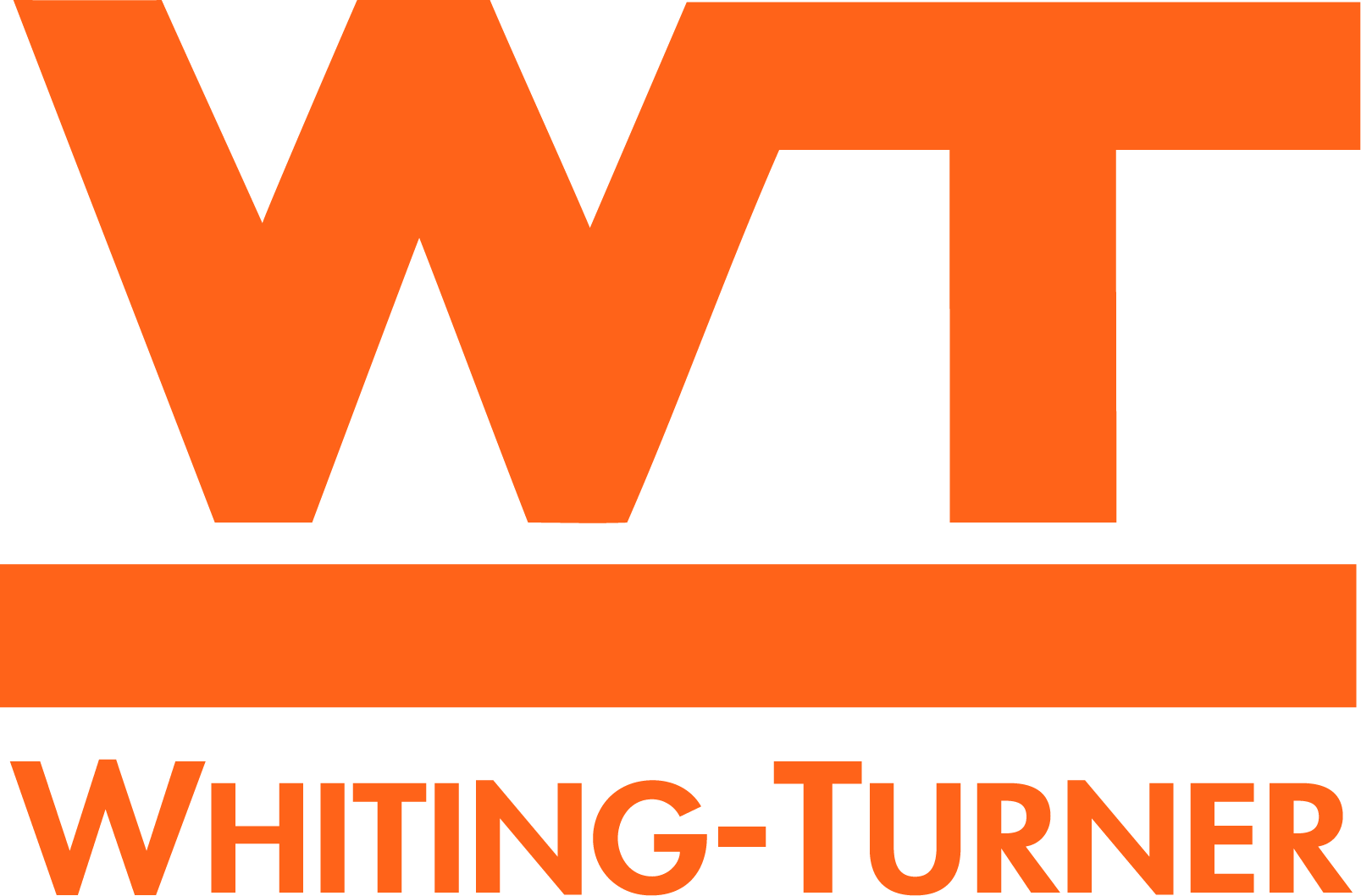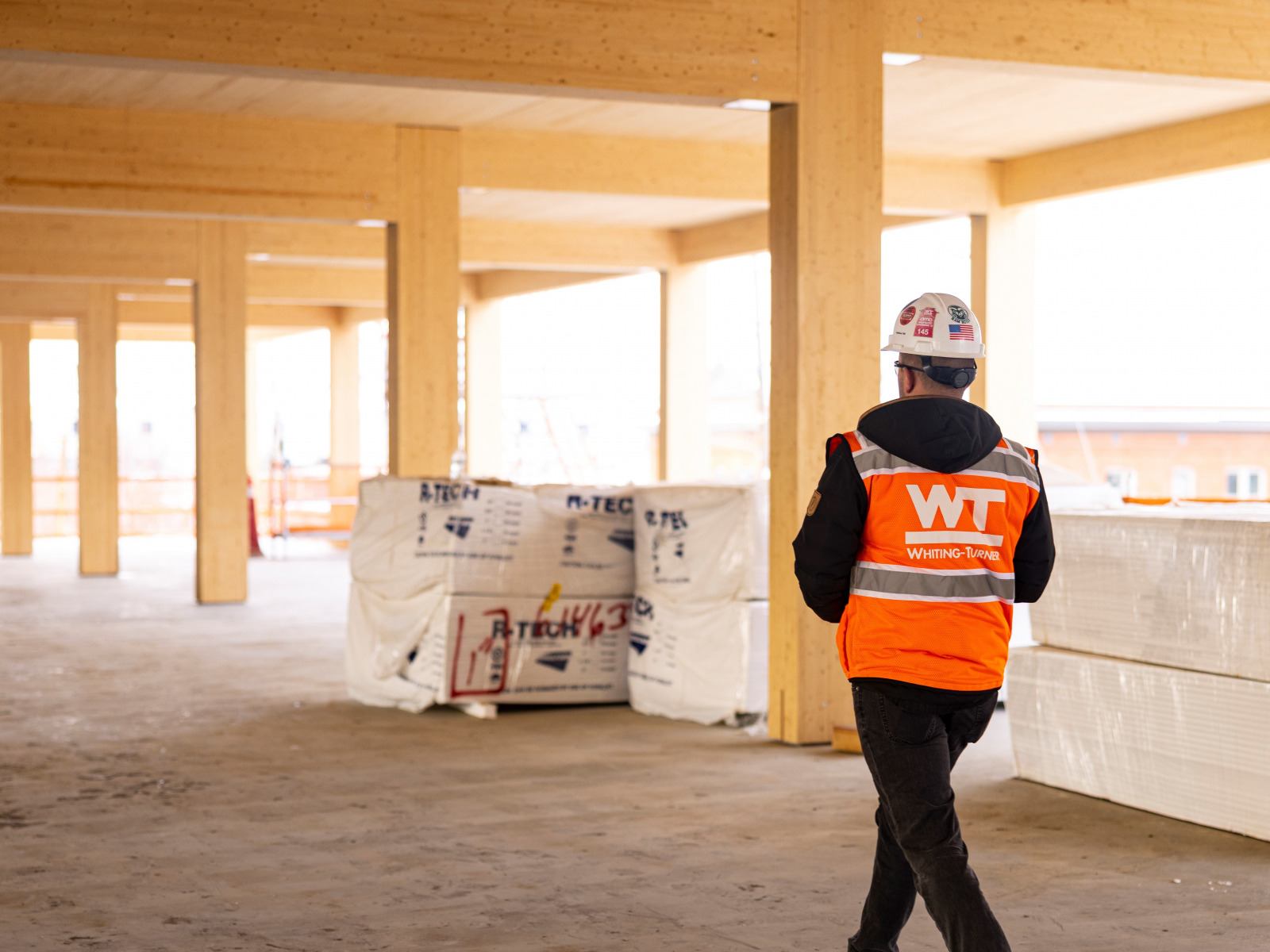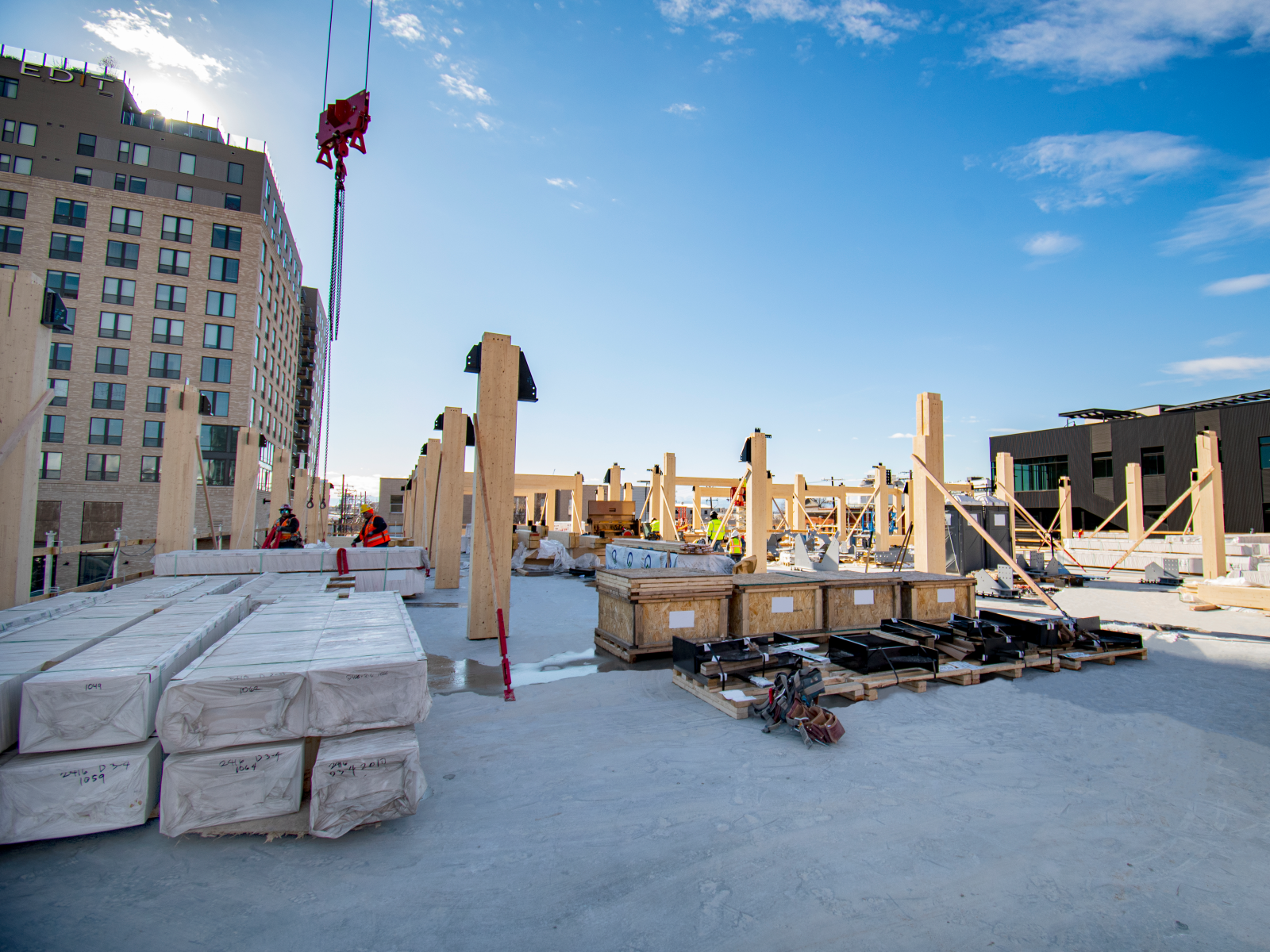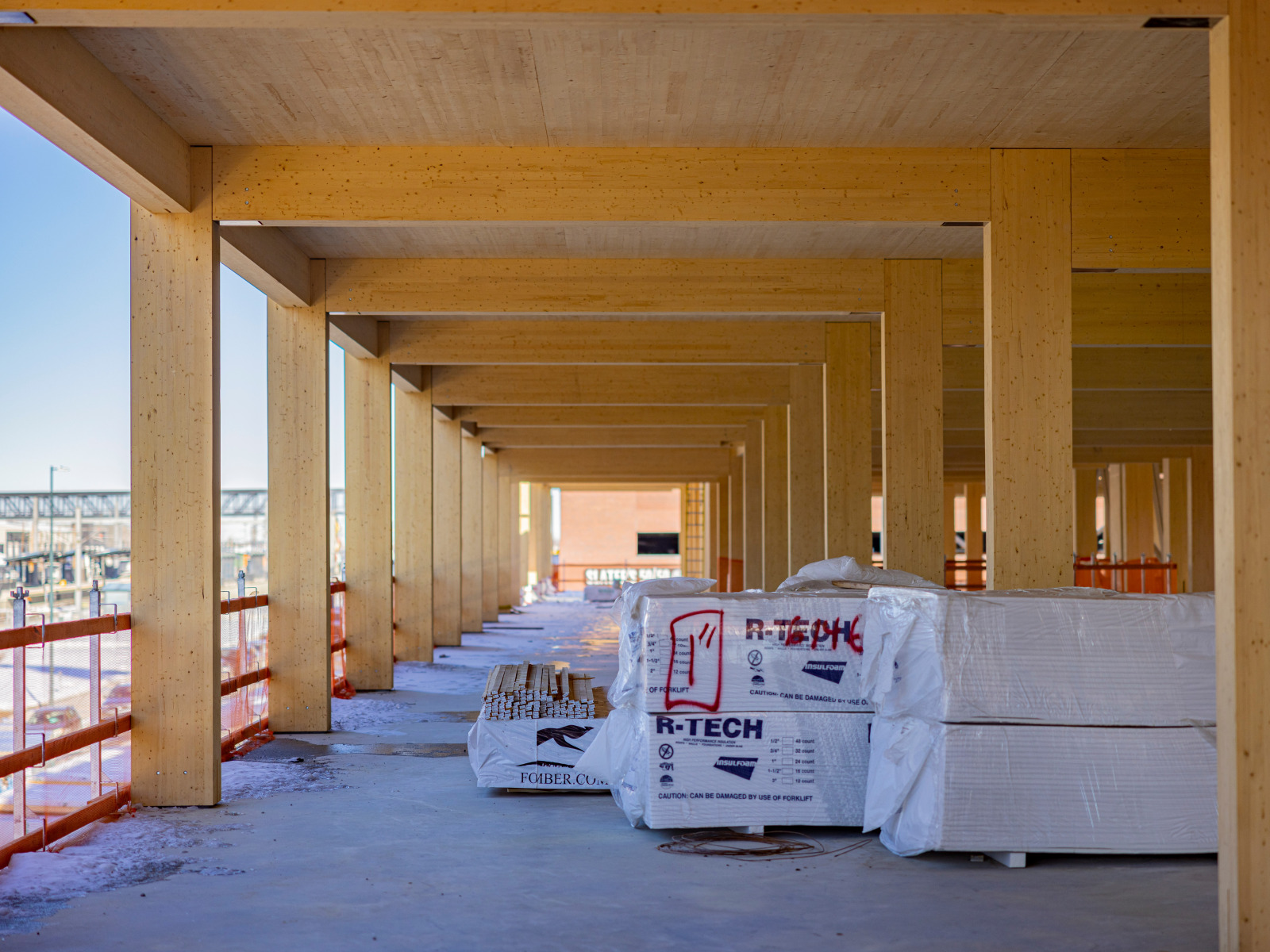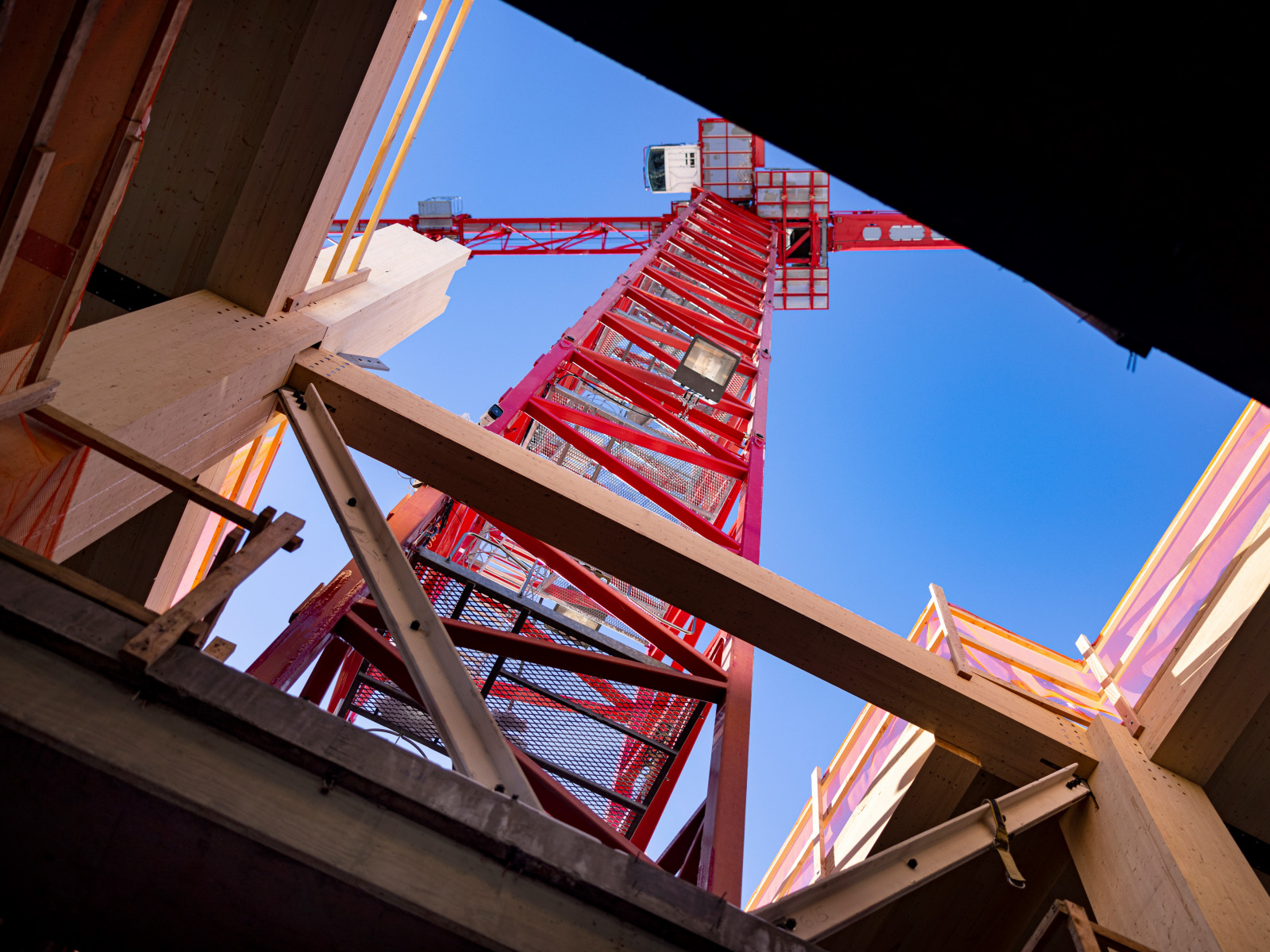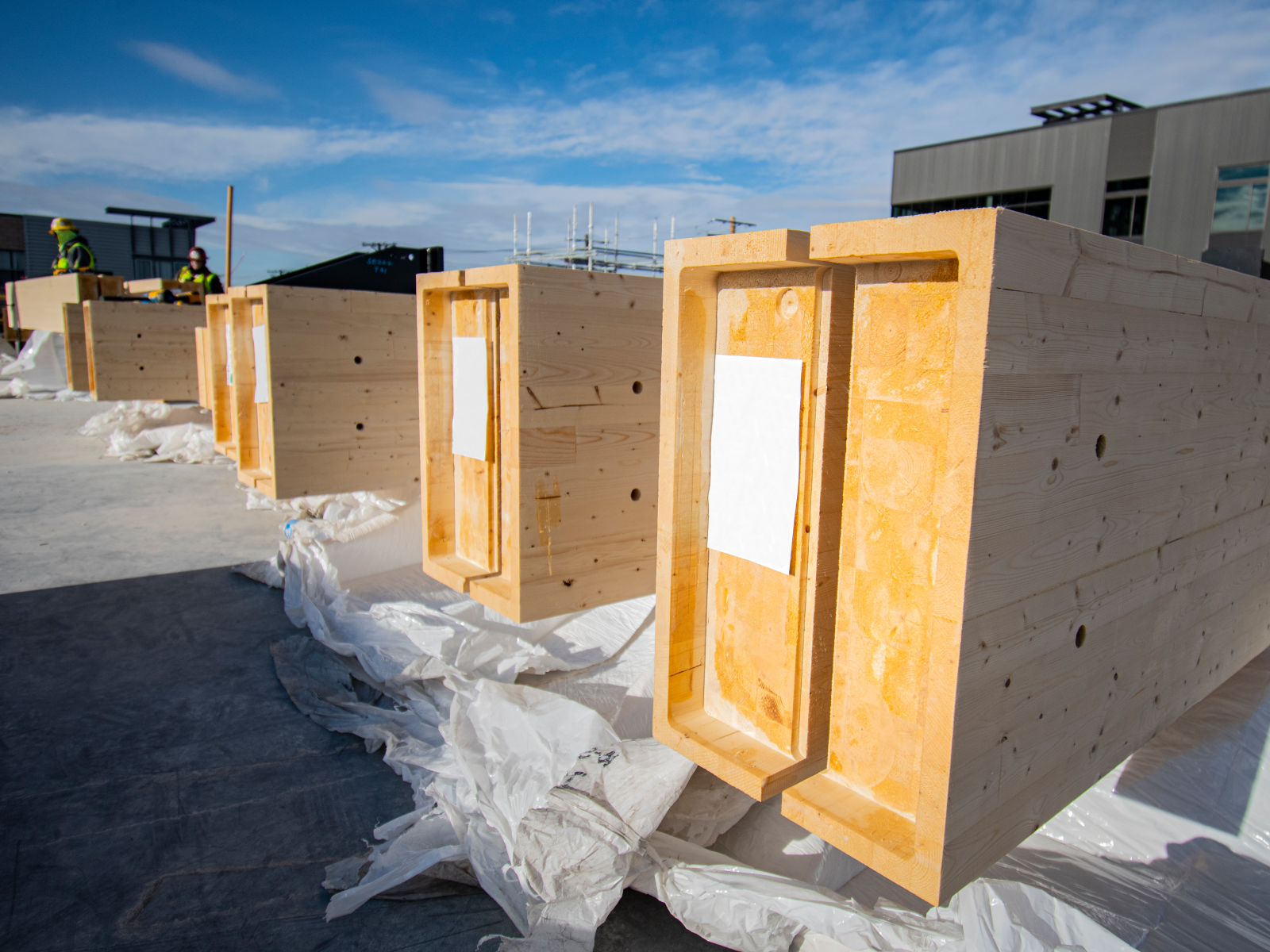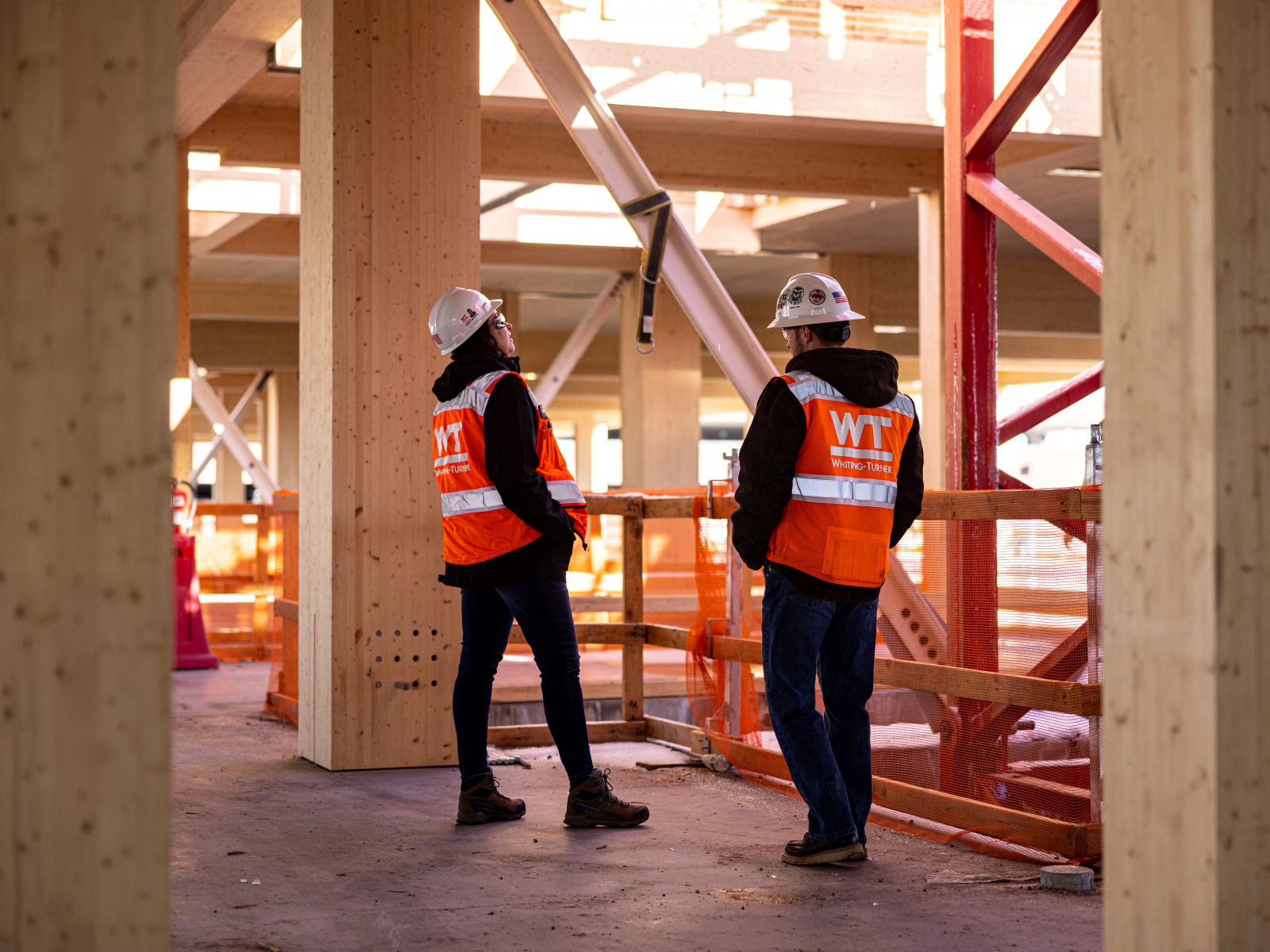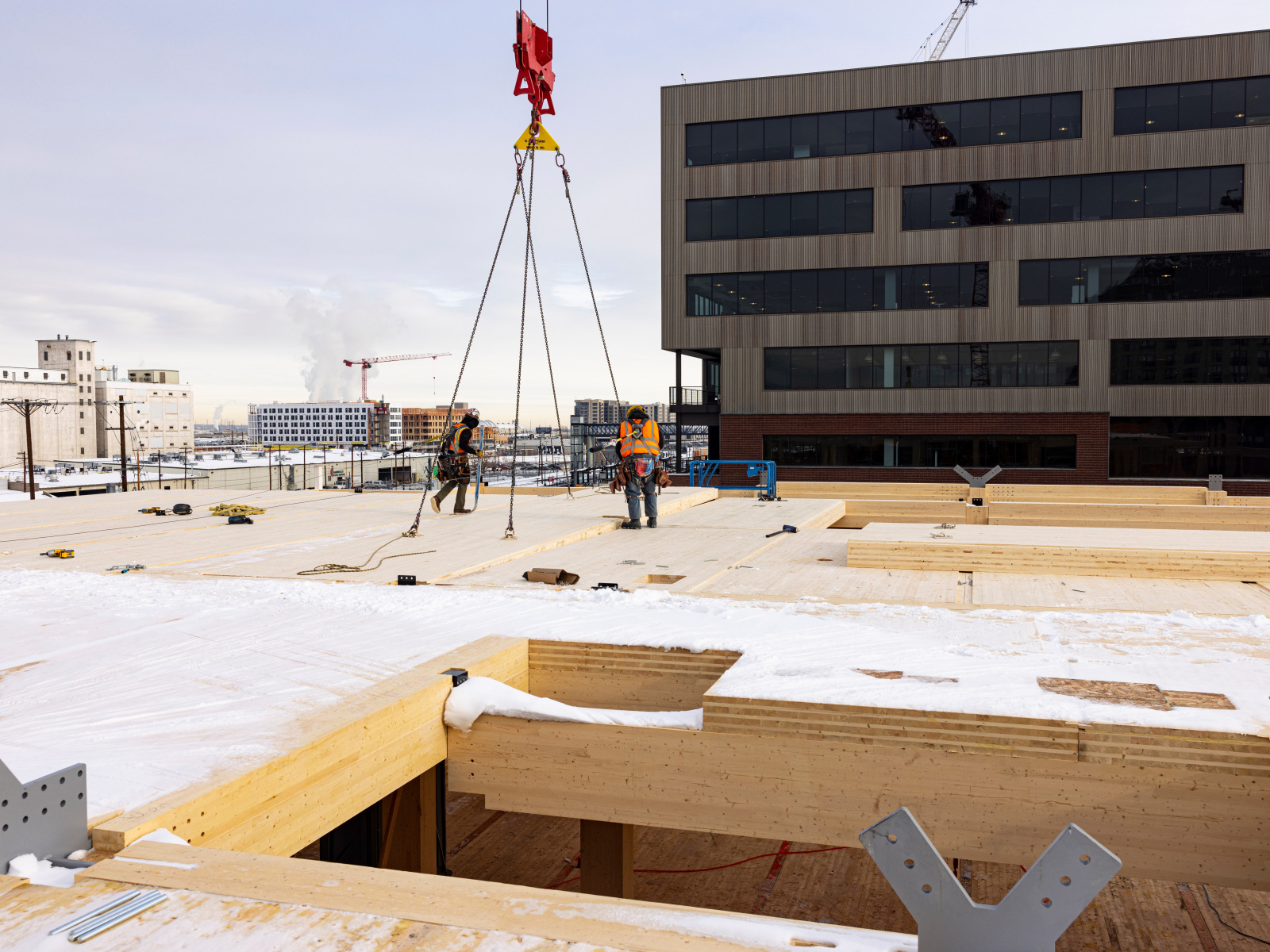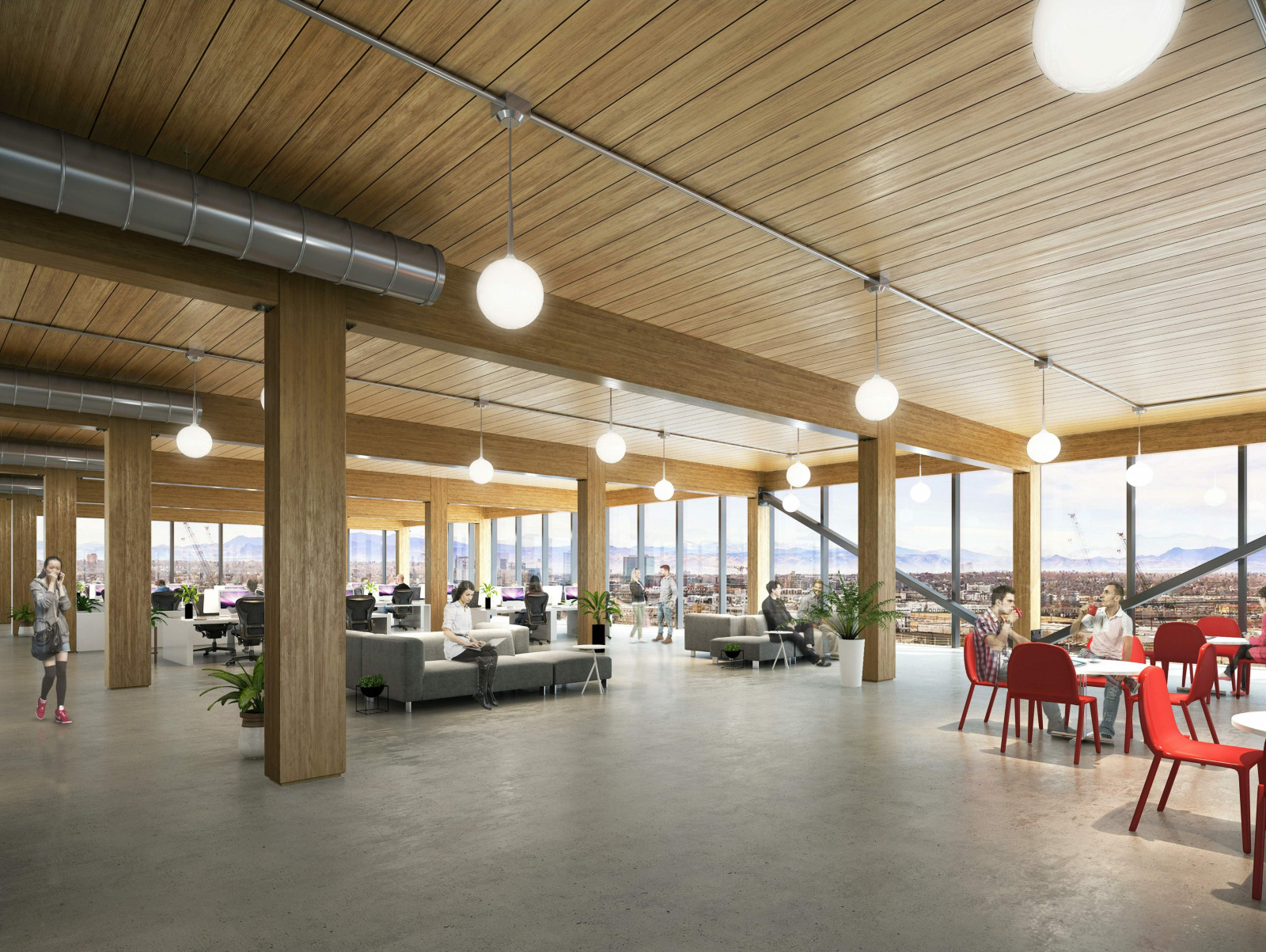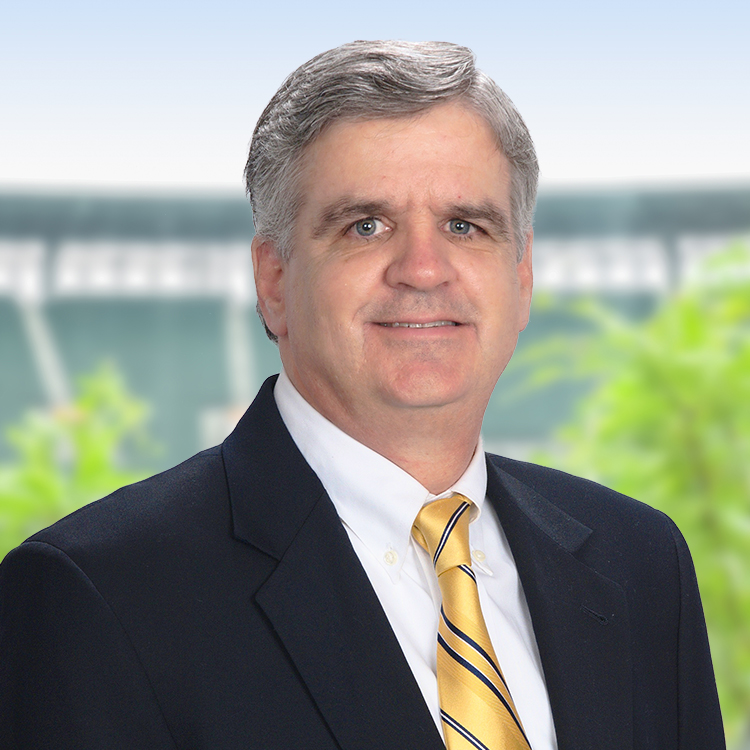T3 RiNo
About
THIS PROJECT
T3 RiNo will be a six-story, 235,000 SF mass timber office building created around a core philosophy of timber, transit and technology, while also embracing the culture of Denver’s River North Art District (RiNo). The modern office space is designed like a loft and will serve as a place to cultivate ideas, collaboration and community. T3 RiNo will combine Denver’s historic building aesthetic with the city’s art district for a refined industrial look. Featured amenities will include:
- Flexible and collaborative work areas
- Social lounges
- 17,000 SF of retail space
- Large, private terraces on each floor
- Fitness and cycling facility
- Floor-to-ceiling windows
- Advanced MEP systems
- Panoramic views of the Denver skyline and the Rocky Mountains
- Exposed timber columns, beams and ceilings in all tenant spaces
The building’s location offers immediate connectivity and accessibility, with three levels of underground parking and convenient access to the Regional Transportation District (RTD) commuter rail system.
PROJECT OVERVIEW
LOCATION:
Denver, Colorado
Mountain States
CLIENT:
Hines
Ivanhoé Cambridge
and McCaffery
INDUSTRY:
Office
PRACTICES:
Lean
Off-Site Construction
Sustainability
VDC
SF mass timber office building
SF of retail space
cubic feet of wood
Built for
SUSTAINABILITY
Built with sustainably sourced timber, T3 RiNo will be one of the most environmentally friendly and sustainable developments in Denver. By using timber as the main structure, the building’s total embodied carbon is much less than it would be if it used traditional steel or concrete. T3 RiNo is set to be LEED, WELL and Energy Star® certified, as well as feature a WIRED Certified digital infrastructure, providing a fast, stable and secure internet connection.
Coordinating
MASS TIMBER
Bringing together the project’s stakeholders (contractor, design partners, owner, MEP subcontractors, exterior skin subcontractors, etc.) from the start of the timber shop drawing process was imperative. Collaboration with the BIM coordination process helped educate the team on the constraints of working with mass timber. Nearly a year was spent on the timber design and coordination planning to ensure adequate time for completion of connection detailing, panel design, fabrication drawings, and ultimately fabrication of the mass timber structure.
On a mass timber project, penetration coordination and structural requirements are precise. Ample time is budgeted to coordinate and review all penetrations through the beam spans, edges of timber deck and cross-laminated timber deck, as they all needed to be spaced and sized an acceptable distance from each other. Using BIM coordination, the team was able to identify possible obstacles and problem solve before the timber began fabrication to meet the project installation schedule.
